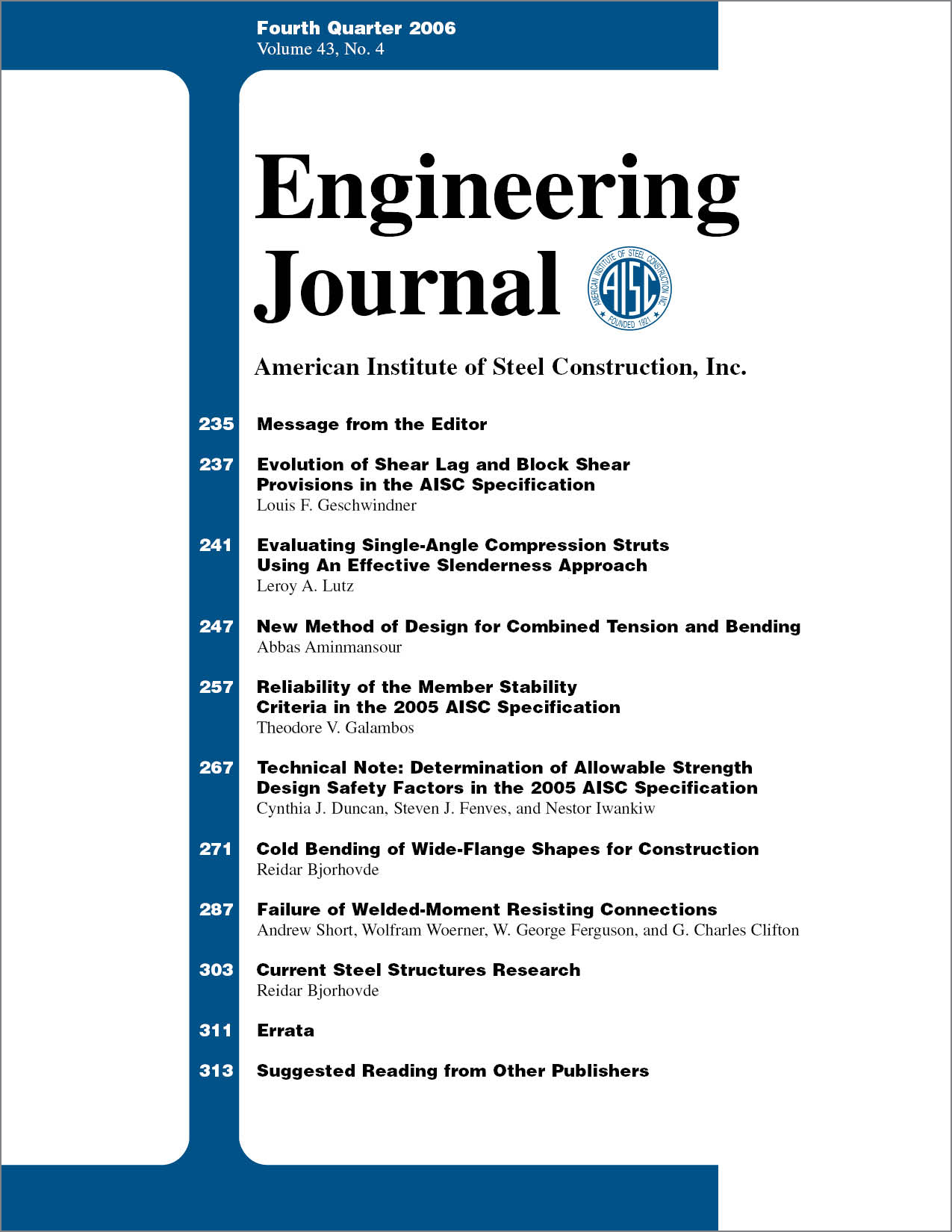Failure of Welded Moment Resisting Connections
DOI:
https://doi.org/10.62913/engj.v43i4.886Keywords:
Connections-Moment, Welds, Seismic DesignAbstract
Potential failure modes in moment resisting connections (MRCs) subject to seismic loads must be controlled, so that adverse modes such as brittle fracture are avoided and ductile modes develop in a predictable manner. To simulate volumetric imperfections in fillet welds, an unfused region was created by removing a section of the weldment, thus creating a full-depth lack of penetration imperfection. Five large-scale MRC specimens were tested, with these imperfections varying in both size and location. Critical "loss of area" parameters for establishing a threshold are determined for the minimum required deformation capacity of a connection and for establishing a threshold between desirable and undesirable failure mechanisms. Increasing the resistance to deformation in the panel zone is considered likely to provide enhanced weld performance. This paper also provides evidence and discussion of the effect of strong and very strong panel zones on the integrity of connection welds.

